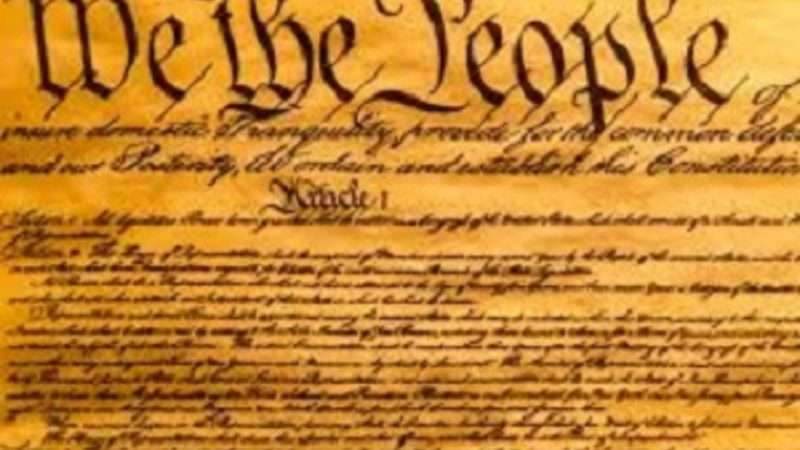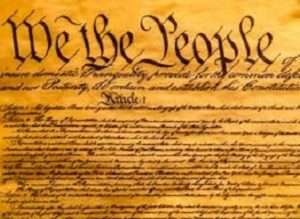

Critics of originalism sometimes claim that originalists focus only on the original 1787 Constitution, while ignoring the Reconstruction amendments, which transformed the Constitution after the Civil War. Sometimes, this criticism is combined with the argument that the neglect of the Reconstruction Amendments is intended to privilege white men over blacks and other racial minorities, whose rights those amendments were enacted to secure. Such arguments have gotten renewed prominence in the wake of the controversial nomination of Amy Coney Barrett to the Supreme Court—thanks in part to a New York Times op ed by Janelle Bouie, arguing that originalists ignore the fact that “[t]he Americans who drafted, fought for and ratified the Thirteenth, Fourteenth and Fifteenth Amendments did nothing less than rewrite the Constitution with an eye toward a more free and equal country.” He concludes that “The Reconstruction Constitution is a fundamentally different document than the Constitution of 1787. Yet our conversations around ‘original meaning’ rarely take account of this change.”
A recent op ed by MSNBC contributor Hayes Brown similarly accuses originalists of ignoring “the fundamental constitutional shift that occurred after the passage of the 13th, 14th and 15th amendments.” Such claims are not new. But they are badly wrong. Those who accuse originalists of ignoring the significance of the Reconstruction amendments are themselves of guilty of ignoring a vast originalist literature devoted to that very subject.
In reality, numerous prominent originalist legal scholars have written extensively about the Reconstruction amendments and their significance. Michael McConnell (a well-known originalist who was, for a time, also a federal judge) has authored prominent articles on the original meaning of the Fourteenth Amendment with respect to both racial discrimination and the meaning of due process of law. Steve Calabresi (another prominent originalist legal scholar, and co-founder of the Federalist Society), has coauthored prominent articles arguing that the original meaning of the Fourteenth Amendment provides broad protection against both racial discrimination and sex discrimination. Christina Mulligan has an important article outlining how we can and should take account of diverse perspectives (including those of women and racial minorities) in understanding the original meaning of the Constitution. Her work is of obvious relevance to interpretation of the Reconstruction amendments.
Co-blogger Randy Barnett ,Evan Bernick, and Kurt Lash, are among a number of originalist legal scholars who have written major works on the meaning of the Privileges or Immunities Clause, in some cases arguing that it provides broad protection for a wide range of rights—far beyond what is protected by the courts today. Bernick also has a pathbreaking new article arguing for a broader interpretation of the Equal Protection Clause, contending that its original meaning imposes an affirmative duty of protection on the state, not merely a duty to avoid racial discrimination. Michael Rappaport, another leading originalist constitutional theorist, has written notable articles exploring the implications of the original meaning of the Fourteenth Amendment for affirmative action programs, and for regulatory takings.
In my book The Grasping Hand, I discuss the impact of the Fourteenth Amendment’s “incorporation” of the Bill of Rights against state governments for “public use” constraints on government power to take private property. I argue that the Reconstruction-era understanding of public use—as revealed in contemporary court decisions, debates over the abolition of slavery, and the framers’ goal of protecting blacks and white Unionists against state governments —provides a stronger basis for enforcing tight limits on government’s power to take private property than is evident in the original 1791 meaning of the Fifth Amendment.
Nor is originalist interest in the Reconstruction Amendments just a product of recent years. McConnell’s work on race discrimination dates back to the 1990s. As far back as 1980, Bernard Siegan published Economic Liberties and the Constitution, which argues that the original meaning of the Fourteenth Amendment provides much broader protection for economic liberties than modern judicial doctrine is willing to recognize. Prominent early originalists such as Robert Bork and Raoul Berger also wrote about the original meaning of the Fourteenth Amendment in the 1960s and 70s, though most modern originalists (myself included) would today argue that Bork and Berger got many things wrong.
It’s also worth noting that pretty much all of the above writers recognize that the Reconstruction amendments made major changes to the existing constitutional order. Few if any originalists claim that the original 1787 Constitution somehow remains in force with few or no significant changes.
There has been much less originalist analysis of the meanings of the Thirteenth and Fifteenth Amendments. But that is in large part because there is less controversy about these amendments than the Fourteenth. Nonetheless, there is a growing originalist literature on these amendments, as well. Notre Dame law Professor Jennifer Mason McAward, for example, has done important work pushing back on the newly popular idea that the Thirteenth Amendment gives Congress broad power to legislate against any injustices than can in some way be indirectly linked to slavery, though she also emphasizes that it does give broad power to suppress slavery and “involuntary servitude” themselves.
With the exception of Raoul Berger (an idiosyncratic liberal who was often associated with conservatives), the above-listed works are all by conservative or libertarian originalists. It is they who most often get accused of ignoring the Reconstruction amendments. But it is important to recognize that liberal originalists have also written major works on the Reconstruction Amendments. Akhil Amar, for example, has literally written the book on how those amendments should change interpretation of the Bill of Rights.
The works mentioned above are just a sample of the vast outpouring of writings on the Reconstruction Amendments produced by originalists over the last several decades. For reasons of space, I have had to omit a great many important books and articles on numerous issues.
It is fair to argue that prominent originalist judges haven’t focused on the original meaning of the Reconstruction amendments nearly as much as academics have (though that is not true of several, like McConnell, who are—or have been—both scholars and judges). Still, originalist judges are far from simply ignoring those Amendments.
Clarence Thomas, for example, has written a well-known opinion arguing that the original meaning of the Fourteenth Amendment strengthens the case for “incorporating” the Second Amendment right to bear arms against the states. The drafters of the Amendment, he points out, believed this to be an important safeguard for blacks’ rights against oppression by racist state and local governments. As far back as 1973, Justice William Rehnquist’s dissent in Roe v. Wade was based in large part on arguments drawn from the original meaning of the Fourteenth Amendment. And these are far from the only examples of originalist judges grappling with the Reconstruction Amendments on a variety of issues.
Originalist judges can and should do a much better job of including the original meaning of the Reconstruction amendments in their jurisprudence than many have done so far. But it is wrong to claim that they have simply ignored the issue, or that they somehow] believe that the Constitution remains largely unchanged since 1787.
I do not expect columnists and other non-experts to be familiar with all of these writings. Indeed, the literature has grown so large that even most constitutional law scholars (myself included!) can’t keep track of all of it. But, while it would be unreasonable to expect lay pundits and commentators, to study this literature in detail, they should at least consult relevant specialists before making sweeping claims about originalism.
Ironically, critics who claim originalists have ignored the Recontruction amendments are at odds with academic critics who argue that originalists take an overly optimistic view of their meaning (as Stephen Griffin contends in an important recent article), or that they disagree among themselves about that meaning so much, that the disagreement proves that originalism is indeterminate. I criticized the latter argument here. Such critiques of originalism would make little sense if originalists really had largely ignored the Reconstruction amendments.
None of the above proves that originalists have found the “right” possible interpretation of the Reconstruction amendments, or that originalism is superior to alternatives such as living constitutionalism. There are plenty of legitimate criticisms of both originalist takes on the Reconstruction amendments, and originalism as a more general theory of constitutional interpretation.
I myself have reservations about many versions of originalism, and defend the theory only on contingent “instrumental” grounds. I remain open to the possibility that some other approach to constitutional interpretation (perhaps one not yet fully developed) might turn out to be superior. But the public debate over originalism and constitutional theory is not advanced by false claims that its exponents have ignored the significance of a set of amendments on which they have actually written extensively.
from Latest – Reason.com https://ift.tt/37kdt04
via IFTTT

